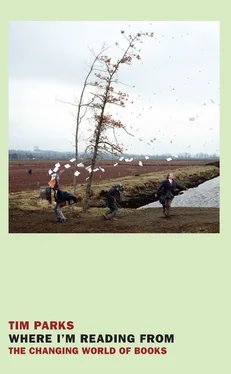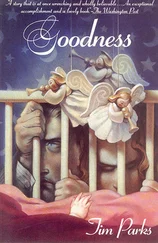As Bateson saw it, then, the depiction of grand ideals was not necessary to make art that might have a positive influence; on the other hand, an intimate knowledge of the local gave author and audience a chance for a more intense experience of connections, complications, and mysteries. International recognition of this or that hugely superior work of art was not important, nor was a discussion of its supposed ideas; what counted, on the contrary, was a frequent, ongoing experience of art, something that might correct our normally reductive and rapacious ways of thinking.
Let me close by proposing this little experiment. Choose any “great” novel, no more than a century old, from your own home culture; in fact, the nearer to home the better; get on the net and check with a couple of critics what major issues the book articulates, and what profound thoughts make it worthy of the international recognition it enjoys. Then try reading it. A hundred to one the simplicities and dogmatisms of criticism will dissolve in a richness of voice and elusive ethos that is constructed from all the different elements of the culture the writer is bringing together. What you actually experience line by line as the book connects with so much you already know, rearranging it in new ways, or sparking recognitions set off by novelties, is not something that can easily be articulated, or that a foreigner reading the same book in translation will necessarily get.
After a while it may even seem as if those elements that raised the book to its special international status are quite incidental to its real performance, almost an alibi that allowed the work to circulate in a politically correct environment. This was certainly my experience a couple of years ago when I started rereading Thomas Hardy; there is so much more in the texture of his writing, the liveliness of his dialogue playing off against the absorption in landscape, than in any of the famed discussions of fate and destiny. It would be a great shame if we were to lose this intense experience of reading for a product with “an ideal direction” that can more easily be discussed among international audiences at literary festivals.
WHAT IS LITERARY style and why is it bound to change as the novel rapidly goes global?
“Style is the transformation the writer imposes on reality,” Proust tells us. We know what he means, perhaps, but the claim hardly helps us describe how a style is created or how it achieves its effects. In fact I can think of no adequate definition of style, if only because it is always diffuse throughout a text. It cannot be pinned down or wrapped up. All the same, we know at once when style is present, especially when it is extreme. Here are the opening lines of Henry Green’s 1939 novel Party Going :
Fog was so dense, bird that had been disturbed went flat into a balustrade and slowly fell, dead at her feet.
There it lay and Miss Fellowes looked up to where that pall of fog was twenty foot above and out of which it had fallen, turning over once. She bent down and took a wing then entered a tunnel in front of her, and this had DEPARTURES lit up over it, carrying her dead pigeon.
This is not standard English. The deixis, in particular the combination of dropped articles and unnecessary demonstratives, is wayward. There’s something unusual too in the syntax of the opening sentence of the second paragraph: “Miss Fellowes looked up to where that pall of fog was twenty foot above and . . .” And what? “And very thick,” you could say. Or, “and decided to pick up the pigeon.” But you can’t at this point say, “and out of which. . . .” It’s as if two different syntactical structures had been imperfectly aligned around the word and , an effect not unlike the breaking up of visual planes in cubism. In general, there is an odd fragmenting of information, and a curious uncertainty about where sentences are going, “turning over once.”
It’s easy enough to see how this fragmentation links to what is being described: the loss of direction and orientation a fog causes, the idea of departures, both in train stations and in prose. But alongside the disorientation, the alliterative rhythms of the writing suggest purposefulness and solidity. Fog flat fell feet, the first sentence offers, and again, dense bird disturbed balustrade dead. The acoustic effect is intensified by the prevalence of monosyllables and the elimination of unstressed articles, or their substitution with a stressed demonstrative. As in nonsense poetry, if the sense seems odd or uncertain, the forward movement is extremely confident. Here is another sentence playing the same tricks:
Headlights of cars above turning into a road as they swept round hooting swept their light above where she walked, illuminating lower branches of trees.
So a number of strategies interact in a pattern to create something homogeneous and distinct. You know immediately you are reading Henry Green. But this doesn’t happen in a vacuum. Readers would not notice the text was “special” if they were not expecting something different, something they had seen many times before. There must be a shared understanding of standard language and syntax, a range of more common usages that generally prevail. English readers in particular (as opposed to American) will notice that some of the effects here recall the working-class dialects of northern England, in which articles are often dropped and one says foot rather than feet when indicating lengths. There’s an irony here since Green’s novel focuses on London’s aristocratic rich, while the third-person narrative voice recalls a working-class north, distant and potentially critical. Yet the voice is not a straight imitation of dialect, since many other dialect elements are missing. In the end, it is not clear what Green’s style “means” or where exactly it’s coming from, but it does begin to establish, as it were, a position, a new and unusual space, within the known cultural setting of 1930s England.
Style, then, involves a meeting between arrangements inside the prose and expectations outside it. You can’t have a strong style without a community of readers able to recognize and appreciate its departures from the common usages they know. Much of what is surprising in Green’s text is inevitably lost in translation, in a language, for example, with different rules of deixis; some is lost simply by shifting the book across the Atlantic. Green’s work never traveled well.
Perhaps such an extreme example is too easy. Here is F. Scott Fitzgerald, introducing Gatsby’s old lover Daisy and her husband, Tom, in The Great Gatsby :
Why they came East I don’t know. They had spent a year in France, for no particular reason, and then drifted here and there unrestfully wherever people played polo and were rich together. This was a permanent move, said Daisy over the telephone, but I didn’t believe it—I had no sight into Daisy’s heart but I felt that Tom would drift on forever seeking, a little wistfully, for the dramatic turbulence of some irrecoverable football game.
At first glance this may seem fairly standard prose. But my Word spell-check does underline unrestfully , and in fact this word is not in Webster’s dictionary. It’s a classic case of a word gaining meaning by not being what you expected: They drifted here and there . . . how? restlessly , of course. But restless suggests an impulse to be up and doing. It can be a noble attribute. Unrestfully suggests not so much the impulse that drives Daisy and Tom to move—actually they only drift—but a lack of benefit from their languor. They drift without relaxing. Fitzgerald feels this mental state is sufficiently special to deserve a neologism to point it up.
Читать дальше












